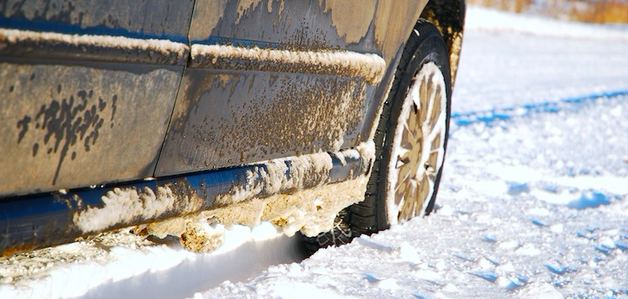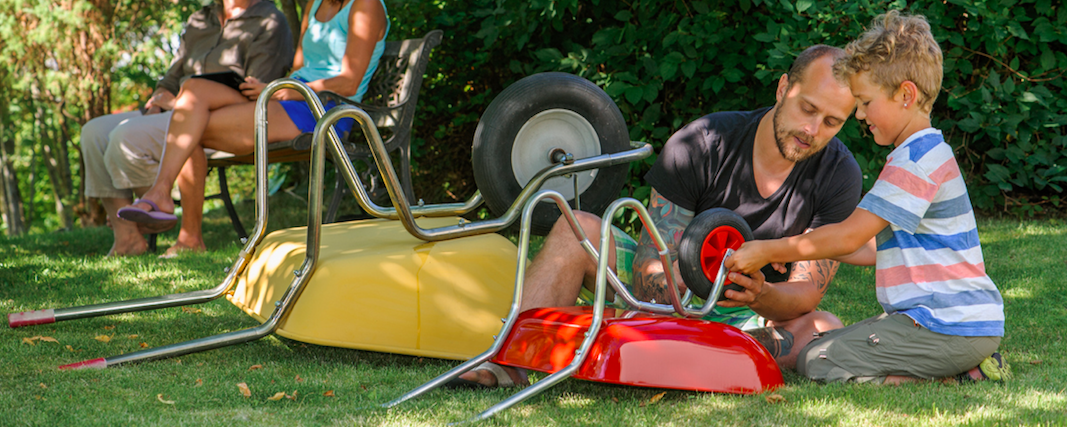Last Updated on February 15, 2024
Why Regular Tire Inspections Matter and How to Do Them
Regarding your vehicle’s safety, few things are as crucial as your tires. They are the only point of contact between your car and the road, making their condition paramount to your well-being. This is where regular tire safety inspections come into play. In this blog, we’ll explore why these inspections are vital for your safety and how they can save you from potential hazards on the road.
Why Regular Tire Safety Inspections Are a Must
Regular tire safety inspections are essential for one simple reason: your safety. Your tires are the only part of your vehicle that touches the road, and their condition directly affects your ability to drive safely. These inspections help you catch problems early, like worn tread or damage, that can lead to accidents if left unattended.
By making tire safety inspections a routine part of your vehicle care, you’re taking a proactive step to protect yourself and your passengers while ensuring a smoother and safer journey.
1. Enhanced Safety
The primary reason for tire safety inspections is to ensure your safety on the road. Inspections help identify issues like tire wear, damage, and underinflation, which can lead to accidents if left unaddressed. By catching and addressing these problems early, you significantly reduce the risk of accidents caused by tire-related issues.
2. Prolonged Tire Life
Regular inspections can extend the lifespan of your tires. Identifying and rectifying problems promptly, such as improper alignment or uneven wear, can help your tires wear more evenly and last longer. This means you won’t have to replace your tires as frequently, saving you money in the long run.
3. Optimal Performance
Well-maintained tires perform better. Properly inflated and balanced tires improve traction, handling, and fuel efficiency. Regular inspections ensure your tires are in peak condition, providing an optimal driving experience.
How to Perform a Tire Safety Inspection
While having your tires inspected by a professional regularly is advisable, you can also conduct visual inspections yourself. Here’s a simple tire inspection checklist:
Tread Depth
Check the tread depth using a tread depth gauge or a penny. Adequate tire tread depth is essential for proper traction, especially in wet or slippery conditions. To perform this step:
- Tread Depth Gauge: You can purchase a tread depth gauge at an auto parts store. Place it in the tread grooves and follow the manufacturer’s instructions to measure the depth.
- Using a Penny: If you don’t have a tread depth gauge, you can also use a penny. Insert the penny into several tread grooves with Lincoln’s head facing downward. If you can see the top of Lincoln’s head, your tread is too worn, and it’s time to replace the tires.
Tire Pressure
Ensure your tires are inflated to the recommended PSI (pounds per square inch) specified in your vehicle’s manual. Proper tire pressure is crucial for various reasons, including:
- Safety: Correct tire pressure ensures that your tires maintain their shape and grip the road properly, reducing the risk of accidents.
- Fuel Efficiency: Properly inflated tires can improve fuel efficiency, saving you money at the gas pump.
- Tire Longevity: Maintaining the right tire pressure helps prevent uneven wear, extending the lifespan of your tires.
To check and adjust tire pressure:
- Use a Tire Pressure Gauge: These are available at most auto supply stores. Remove the valve cap, attach the gauge, and read the pressure. Add or release air as needed to match the recommended PSI.

Tire Damage
Look for signs of damage like cuts, bulges, or punctures. Damaged tires can compromise your safety and the performance of your vehicle. Inspect your tires thoroughly:
- Cuts: Check for cuts or gashes on the tire’s sidewalls or tread. Deep cuts can weaken the tire and lead to blowouts.
- Bulges: Look for unusual bulges or bubbles on the tire’s surface. These can indicate internal damage and pose a risk.
- Punctures: Examine the tire for any punctures, especially if you frequently drive on rough roads. Small punctures can often be repaired, but larger ones may require tire replacement.
Uneven Wear
Inspect for uneven wear patterns, which could indicate alignment or suspension issues. Uneven wear affects not only tire performance but also vehicle handling. Here’s how to check for uneven wear:
- Run Your Hand Over the Tread: Feel the tire’s tread. If you notice differences in the tread depth or texture across the tire surface, it’s a sign of uneven wear.
- Check for Feathering: Feathering is when the tread wears down unevenly on the tire’s edges. Run your hand along the tire edges in both directions to detect feathering.
Valve Stems
- Check that valve stems are intact and not leaking air. Valve stems are crucial for maintaining proper tire pressure. Ensure they are secure and not damaged. If you notice any air leakage around the valve stem, it may need to be replaced.
Spare Tire
- Don’t forget to inspect your spare tire as well. It’s often overlooked but essential for emergencies. Ensure it’s properly inflated, in good condition, and ready for use. Discovering a flat spare is frustrating when you’re in a roadside emergency.
Performing these checks regularly can help you maintain your tires in good condition, improve safety, and extend tire life. Remember that if you have doubts or find issues, it’s a good idea to consult a professional tire service for a thorough inspection and necessary repairs or replacements.
Check Your Tire Pressure Monthly
One of the most critical aspects of tire maintenance is monitoring and adjusting your tire pressure. Tires tend to lose about one pound per square inch (psi) of air pressure per month, with greater fluctuations in climates with rapid temperature changes.
In colder weather, tire pressure can drop even further, about one psi every ten degrees Fahrenheit. Under-inflated tires can lead to premature tire wear and decreased fuel efficiency, while over-inflated tires may experience uneven tread wear. Performing a quick pressure check every month can help prevent these issues and keep your tires performing optimally.
Assessing Tread Depth: The Penny Test
To ensure that your tires have sufficient tread depth, you can use a simple method known as the penny test. Insert a penny into your tire’s tread groove with Lincoln’s head facing downward. If the tread doesn’t cover the top of Lincoln’s head, it’s a clear sign that your tires need replacement.
Make sure to check multiple spots on each tire for consistency. Alternatively, you can use a tire tread gauge to measure the remaining tread depth. Replace your tires if any part of the tread measures two seconds of an inch or less. Most tires also feature tread wear indicator bars that become visible at the two thirty-seconds of an inch mark. If the tread matches these bars at two locations, investing in new tires is time.
Regular Tire Rotation
Routine tire rotation is a crucial maintenance task that should be performed approximately every 5,000 miles or during each oil change. This practice helps prevent irregular or uneven tire wear, ensuring a longer lifespan and improved performance. Don’t overlook your spare tire during these checks, as it’s equally important.
Choosing the Right Replacement
When the time comes to replace your tires, Tires-Easy.com offers an extensive selection at competitive prices and swift shipping. Our wide range of tires ensures you can find the perfect fit for your vehicle and driving needs. Prioritizing safety by maintaining your tires and replacing them when necessary is an investment in your well-being and the efficiency of your vehicle on the road.
Trust Tire Easy for Your Tire Safety
At Tire Easy, we understand the significance of tire safety inspections. Our tire experts help you ensure your tires are in top condition. We offer comprehensive tire inspections and maintenance services from tread depth to tire pressure.
Don’t compromise your safety on the road. Choose Tire Easy for reliable tire safety inspections, quality tires, and expert advice.
Ready to Ensure Your Tire Safety?
Browse Our Selection of Tires and take the first step toward a safer and more enjoyable driving experience. Invest in tire safety inspections and enjoy peace of mind on every journey.
FAQs
What is the purpose of tire inspection?
Tire inspections assess your tires’ condition, helping to ensure they are safe and durable. By regularly inspecting your tires, you can identify potential issues like tread wear, damage, or improper inflation, which can compromise safety. Addressing these problems promptly through inspection can extend the life of your tires and enhance road safety.
What makes a tire safe to drive?
Safe tires are characterized by adequate tread depth, maintaining the correct air pressure, and showing no visible signs of damage such as cuts, bulges, or punctures. Proper tread ensures traction, while the right tire pressure ensures stability and efficient performance. Tires without visible damage are less likely to fail, reducing the risk of accidents while driving.
What is basic tire safety?
Basic tire safety involves simple yet crucial practices, such as maintaining the recommended tire pressure, regularly checking tread depth, and inspecting for damage or wear. Properly inflated tires provide optimal traction and stability, while tread depth checks ensure they are roadworthy. Regular inspections help identify problems early, ensuring your tires are in good condition.
Why are tires important to safety?
Tires are pivotal in vehicle safety as they are the only part of your vehicle in direct contact with the road. Their condition significantly affects traction, handling, and braking, especially during adverse weather conditions. Maintaining tires in good shape reduces the risk of accidents, making them a fundamental aspect of road safety and overall vehicle performance.









